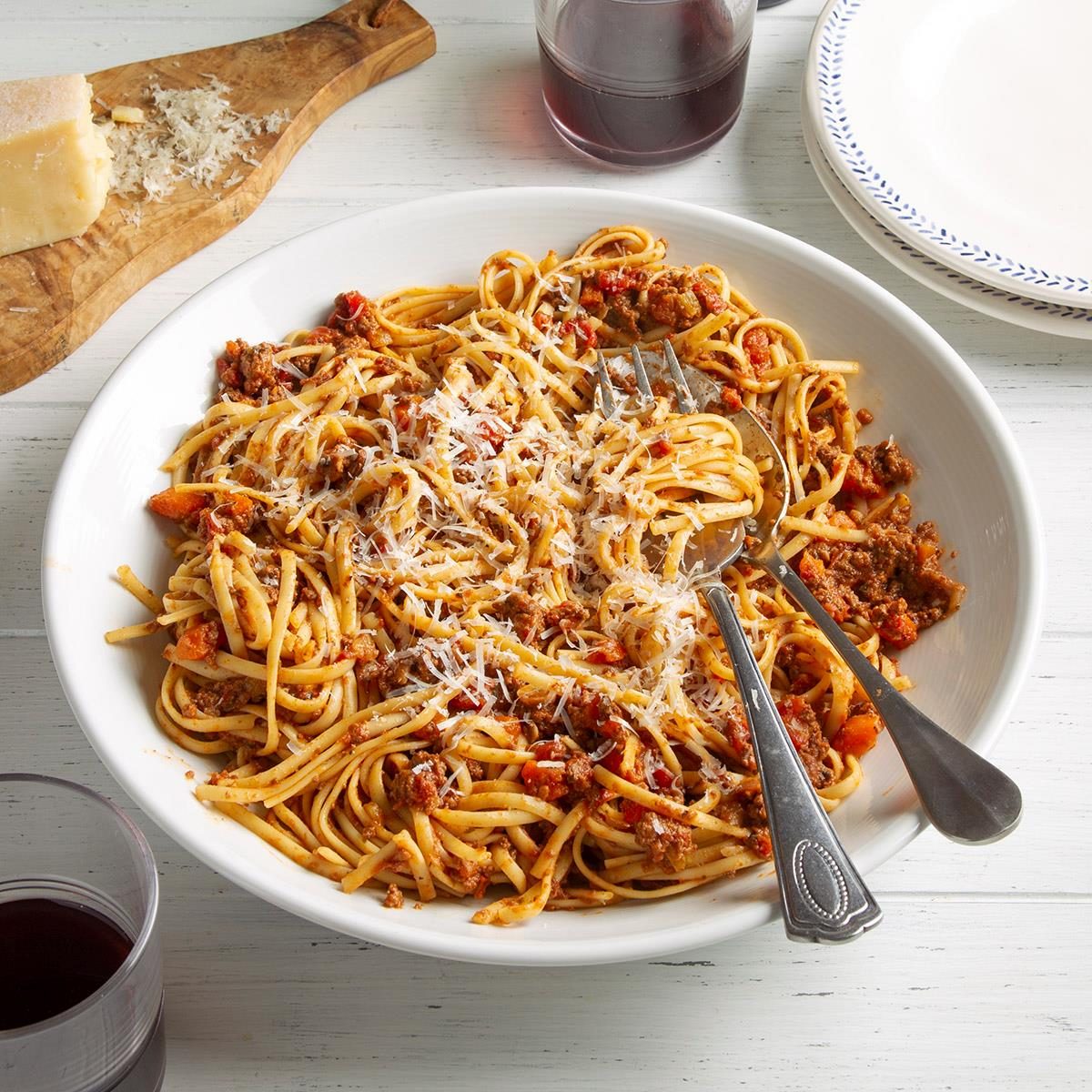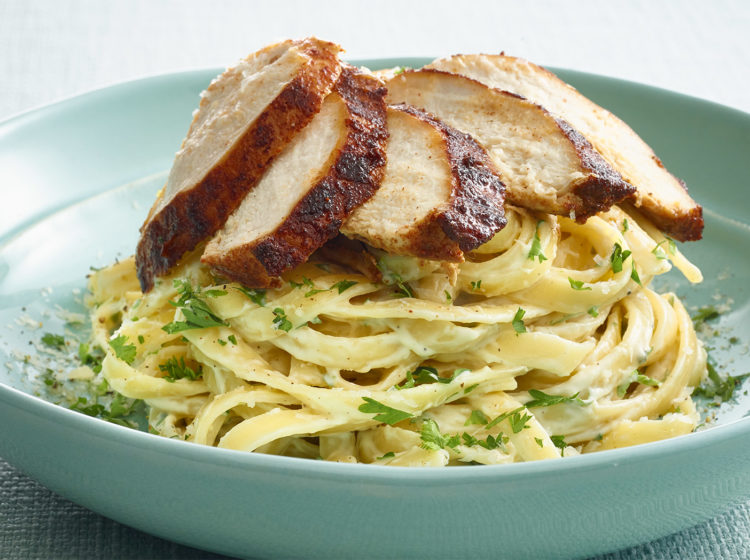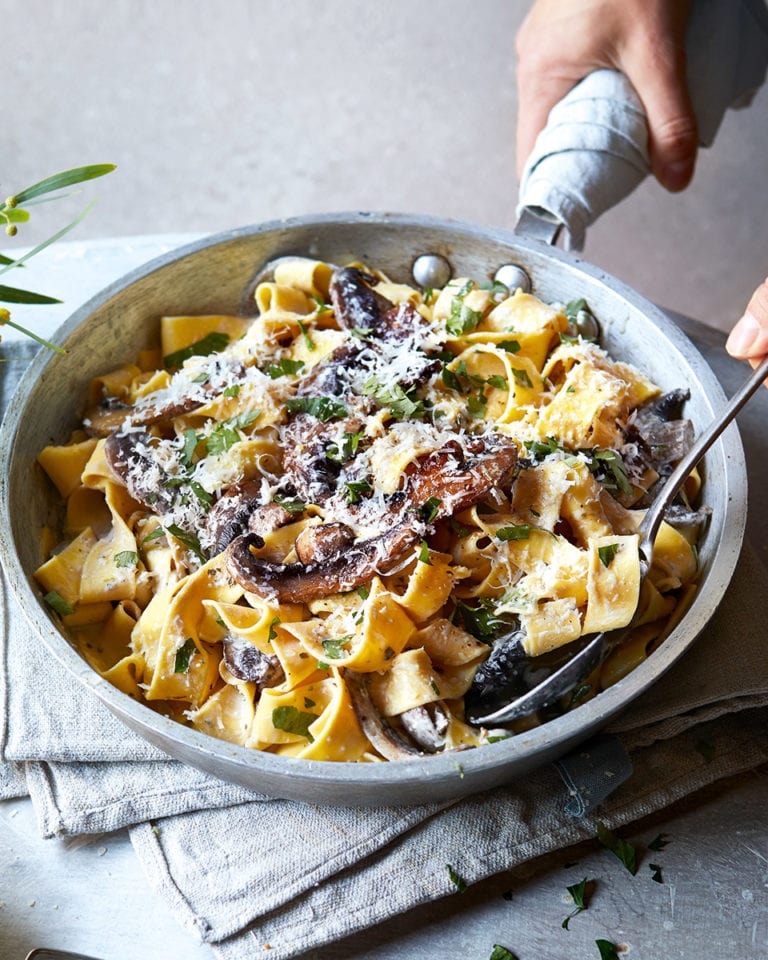history claims that the earliest known use of pasta dates back to China’s Shang Dynasty (1700–1100 BC), when rice or wheat flour was used to make various types of pasta. In the first millennium BC, pasta seems to have been a part of the diet of the ancient Greeks.
According to archaeologists, noodles were probably first produced thousands of years ago in central Asia. It travelled westward from Asia. Although there are numerous theories, it is unclear how pasta made its way to Europe. Some people think that the dish originated in the Middle East and were brought west by Arab nomad

One essential component of Italian cooking is pasta. Pasta can be broadly classified into two categories: fresh pasta (pasta fresca) and dried pasta (pasta secca). While dried pasta can be made at home, it is primarily made commercially using an extrusion method.
To begin with, pasta has a long and rich history in Italian culture. The first professional Italian pasta stores appeared in Southern Italy during the Middle Ages. Pasta became exportable to every country in the world, and soon Salerno, Genoa, and Naples had huge pasta manufacturers.
It is for good reason that pasta is a mainstay of the Italian diet. Pasta is one of the most widely consumed foods in the world because it is flavorful, substantial, easy to prepare, and consistently fulfilling.
Pasta has a long history; it dates back to the 4th century B.C., when an Etruscan tomb depicted a group of natives preparing what appears to be pasta. This is despite the popular legend that Marco Polo brought pasta to Italy after his exploration of the Far East in the late 13th century.
What’s Italy’s most popular pasta?
Overwhelming the European and American markets, Barilla Pasta is the biggest dry pasta brand in Italy. Raised with high-protein durum wheat flour, Barilla’s products are known for being among the best Italian pasta brands in the US and have a long history of excellence.

At around 60 pounds per person annually, Italians consume the most pasta of any country in the world. While most Italians eat pasta every day, they watch how much they eat. In Italy, a portion is roughly a cup, with a large portion of vegetables and salad and a small portion of meat.
It’s true that there’s a widespread perception that pasta’s high calorie content makes it unhealthy and causes weight gain. The cornerstone of the Italian Mediterranean diet, which is regarded as one of the healthiest in the world, is pasta.
What is pasta called in Italy?
The word pasta, which means “paste” in Italian, refers to the paste that is created by mixing flour, egg, and water to make pasta dough. However, pasta was known as “maccaronaro” before Italian pasta became widely consumed worldwide.

Pasta and egg noodles are both made from unleavened dough. Here are a few of the variations: Components: Pasta and egg noodles differ primarily in that the former requires the presence of eggs. While most store-bought dried pasta recipes call for eggs, many homemade pasta recipes don’t.
Ways to prepare pasta
Components Generally speaking, durum wheat flour is used to make dried pasta. Eggs and wheat flour (ideally very finely ground ’00’ flour), whether or not combined with wheat semolina, are used to make fresh pasta. Since homemade pasta is typically consumed fresh, the following are the guidelines for making fresh pasta: A work surface is covered with a mixture of type ’00’ flour, semolina (also known as coarsely ground wheat), and salt. Every type of fresh pasta contains semolina, though the amounts vary depending on where in Italy you are. The more semolina used, the more pasta from the heel of Italy. Pasta is given bite by semolina.
Table of Contents
Spaghetti

Long, thin, cylindrical, and solid pasta is called spaghetti. It is a mainstay of authentic Italian cooking. Spaghetti is made of milled wheat, water, and occasionally added vitamins and minerals, just like other pastas. Semolina made from durum wheat is usually used to make spaghetti in Italy.
pasta with a cylindrical shape that is usually served with thick sauces, like tomato sauce.
Spaghetti was originally quite long, but in the second half of the 20th century, shorter lengths became more and more popular, and today, 25–30 cm (10–12 in) lengths are the most common sizes available.
Rigaton

Like penne pasta, rigatoni are big, tube-shaped pastas with ridges around the edges that are ideal for containing grated cheese and sauces. These robust, thick tubes are sturdy.
Pasta known as rigatoni has its origins in Italy. They occasionally have a slight curvature and are bigger than penne and ziti. Compared to elbow macaroni, they are not as curved.
Similar to penne, rigatoni is a hollowed-out, cylindrical pasta tube type. In contrast, penne is substantially smaller, according to Paesana.
Though most strongly associated with Rome, rigatoni can be found throughout Italy in trattorie and restaurants. A more diminutive variety known as rigatoncini, or “little rigatoni,” is well-liked in Sicily and is sometimes served with stews of fish and other shellfish along the Adriatic coast. One classic dish from the cucina povera, or poor people’s cuisine, tradition in Rome is called rigatoni con la pajata in the local dialect. It may not be to everyone’s taste, though. This involves adding unweaned calves’ intestines, which still contain their mothers’ milk, to a standard sugo, or meatless tomato sauce. It’s necessary to look for this dish in restaurants even in Rome, but food markets have the ingredients easily accessible.
Fusilli

Pasta shapes that resemble helices or a corkscrew are called fusilli. There is a variation called rotini.
Fusilli are thick, long noodles shaped like a corkscrew. Originally from southern Italy, fusilli pasta is typically served with a plain tomato.
Fusilli spirals are ideal for preserving thick, creamy sauces. This adaptable pasta is delicious in salads, one-pan meals, and pasta bakes.
In addition to being high in fiber, which promotes healthy and speedy digestion, whole wheat pasta can help lower your blood sugar and cholesterol levels. Without feeling guilty or concerned about your health, savor a bowl of fusilli pasta. You can count on a satisfying, healthful meal because whole wheat was used.
Ferruccio. This wavy pasta works well in chunky vegetable sauces and pasta salads. Because of the way the shape captures the dense texture, it’s also frequently served with delicate cream sauces.
Macaroni

Macaroni is made from durum wheat and is usually cut into small pieces; elbow macaroni is the name for curved macaroni. While macaroni can be shaped by some home machines, macaroni is typically made commercially by large-scale extrusion, just like most pasta.
The plural form of the Italian word maccheroni, maccherone, is where the name originates. Macaroni goes well with almost any kind of sauce, baked goods, salads, soups, and stir-fries. Although elbow macaroni is commonly used in pasta salads, it is also frequently used in macaroni and cheese recipes. According to the International Pasta Organisation, the word’macaroni’ originated with the Greeks who founded the colony of Neopolis (present-day Naples) in 2000–1000 BC. They also took over a native dish called macaria, which was made with barley flour pasta and water.
Linguine

The plural form of the feminine name linguina, linguine means “little tongues” in Italian. Linguettine is a slimmer form of linguine. Is spaghetti and linguine the same thing? spaghetti What distinguishes them? Spaghetti and linguine are both long, thin pasta shapes, but the former is flatter and thicker than the latter.
Linguine is flat and ribbon-like, but not as wide as fettuccine, in contrast to spaghetti, which is round and tubular. Because of its great versatility, linguine can be served with both thick and thin sauces. It works well with thicker sauces, like cream sauces, and has a slightly larger surface area than spaghetti. Because linguine is frequently lighter in protein than other meatier options, it goes well with seafood.
Ideal paired with: Lucene is an extraordinarily Serve best with: Linguine is a very adaptable noodle. Because it’s thin, similar to spaghetti, it pairs well with a variety of light sauces. However, because of its flatness, it also withstands thicker sauces, like those made with cream or butter.
Farfalle

In Italian, ‘farfalle’ means butterfly. Farfalle’s shape has earned it another name, “bow tie pasta.” This adaptable pasta tastes fantastic in salads and pairs well with rich sauces like cream, tomato, or pesto as well as light bases like olive oil and butter.
Pasta called farfalle (Italian: [farˈfalle]) is also referred to as butterfly, bow-tie, and ribbon pasta. The Italian word farfalle, which means “butterflies,” is the source of the name. The word for “bow ties” in the Emilia-Romagna region of Italy is “strichetti,” used to refer to farfalle.
Pasta has been around since the 1500s, when it first appeared in the Emilia-Romagna and Lombardia regions of Northern Italy. Creamy sauces are a common ingredient in farfalle recipes, and traditional pasta is used to prepare this beloved Eastern European dish.
All you need to make traditional farfalle, or bow ties, at home is flour and water. Use durum wheat semolina, which is a highly refined flour that is typically imported straight from Italy, to ensure that your pasta stays firm and “al dente” throughout the cooking process.
Pasta Farfalle, or bow-tie pasta, is an Italian pasta variety. Water and durum wheat flour are used to make it. After the dough is cut into pieces, it is extruded through a die. Although farfalle pasta comes in a variety of sizes, two inches long by one inch wide is the most typical size.
Orecchiette
:max_bytes(150000):strip_icc()/Homemade-Orecchiette-FT-RECIPE1023-a0543248058b45fc97218e848efd99f8.jpg)
” Little cognizance,” orecchiette, is Puglia’s most well- known pasta dish. This pasta, which is made by pressing the dough with the thumb, is also called Orecchie di Prete in Abruzzo, which translates to” the clerk’s cognizance.
” Orecchiette( pronounced( orekˈkjɛtte); singular orecchietta; from Italian orecchia’ observance’, and- etta’ small’) are a pasta typical of Apulia, a region of Southern Italy. Their name comes from their shape, which resembles a small observance.
This is submissive, it’s vegan and a soul- warming dish that can be eaten hot or cold like a pasta salad. You may want to refresh the dish with a light dressing of redundant abecedarian olive oil painting and a little bomb juice with a stir before serving if you eat it cold. Apulia, a region in Southern Italy, is known for its orecchiette pasta( pronounced( orekˈkjɛtte); singular orecchietta; from Italian orecchia’ observance’, and-etta’small’). Their form, which resembles a bitsy observance, gave rise to their name.
This dish, which is vegan and submissive, is hearty and can be enjoyed hot or cold, important like pastasalad.However, you might want to requital it with a simple dressing made of redundant abecedarian olive oil painting and a little bomb juice, stirring everything together before serving, If the dish is served cold.
Fettuccine

Long, strand-like pasta calledfettuccine is frequently served al dente with creamy, dairy-based sauces like the well-known Fettuccine Alfredo. It is ideal for protein-rich dishes that include chicken or another type of meat as a main ingredient. The origins of fettuccine can be found in Tuscan and Roman cuisine.
Alfredo Di Lelio, who had four years earlier established a restaurant on the Via della Scrofa in Rome, Italy, under his first name, invented fettuccine all’alfredo in 1914.
Born in Rome in 1883, Alfredo di Lelio is the creator of the fettuccine that bears his name. He began his career at a family restaurant in Piazza Rosa, which later disappeared to make way for the arcade that is now known as Galleria Sordi.
Fettuccine, an Italian word meaning “little ribbons,” is a type of flat pasta that originated in Tuscan and Roman cooking. Wide, thick, and flat, fettuccine noodles resemble tagliatelle but are slightly thinner. Eggs and flour are combined to make fettuccine pasta.
Sure, It is true that Alfredo Di Lelio is the creator of Fettuccine Alfredo, and it comes from Rome, Italy. He made a pasta with light butter and parmesan cheese. Though popular variations of the well-known pasta dish, many of these renditions of the classic Italian dish are not even Italian.
Penne

One of the most well-known pasta shapes in Italy is penne, which is adored both domestically and abroad. Penne is a short pasta with angled edges that resembles a cylinder. The word “pen” derives from this shape.
A quill served as the model for the shape. Semolina flour, or durum wheat flour, and water are combined to make penne pasta. To form pasta, the dough is kneaded and then forced through dies. Pasta is dried and packaged after shaping. One of the most well-known pasta shapes in Italy is penne, which is adored both domestically and abroad.
Penne is a short pasta with angled edges that resembles a cylinder. The word “pen” derives from this shape. A quill served as the model for the shape. Grain, which is used to make pasta, is one of the fundamental food groups in a balanced diet, along with fruits, vegetables, fish, and poultry. If it’s made from whole grains, it can provide you with fiber in addition to being a good source of energy. That may help reduce cholesterol and ease stomach issues.
You will be better off overall if you switch to whole grain pasta and other wheat products. It provides the following benefits: enhances digestive well-being. reduces the risk of obesity, heart disease, stroke, and other conditions
Lasagna

Pasta dish of Italian descent, lasagna is made with wide, frequently ruffled noodles and a white or tomato sauce. The singular form of lasagna is a variation from the plural lasagna, which is called by northern Italians. A flat, enlarged pasta sheet called lasagna (plural “lasagne”) is typically prepared in Italy with ragù (a meat-based sauce), Béchamel sauce (a white sauce), and Parmigiano-Reggiano (Parmesan cheese).
Over the years, lasagna has taken on many different recipes, even though the classic version is still quite popular. In the fourteenth century, Lasagna made its dramatic debut in Naples, Italy, during the Middle Ages.
This dish was originally only served on special occasions and holidays. Ironically, Italians were first exposed to this delicious dish during the height of the Black Plague.
More often than not, lasagna is served with a salad, which is both far less successful and far more worthy. True, a side salad can serve as a nice palate cleanser if your lasagne is very rich, oily, and filling. It needs to be served separately, though.
Pappardelle

Pappardelle are long, flat, and wide ribbons of pasta made (traditionally) from eggs. They are native to Toscana, or Tuscany, which is renowned for its hearty, flavorful sauces that are typically meat-based.
Pappardelle’s large surface area and coarse texture make it the ideal side dish for heartier sauces like ragus. Pappardelle is a type of long, flat, very wide noodle that has a width of two to three centimeters.
Eggs are added to the fine durum wheat flour (00 or semolina flour) used to make the pasta dough. Appardelle is a flat ribbon pasta that works well with thick, rich sauces that coat the wide egg noodles.
In Tuscany, there’s a popular wild boar ragu, but there are also traditional pasta sauces made with lamb, pork, and beef. What does ‘Pappardelle’ mean? The verb pappare, which means “to gobble up,” is the root of the word pappardelle. This is probably a reference to the pasta’s deliciousness as well as the less than honorable way that it is eaten! Thinking.
Our Blog
Worldwide Exclusive Whiskey | Origin 2023
ALCOHOL AND BEVERAGES OF USA AND PRODUCTION RULES IN 2024
Types Of Teas Around The World